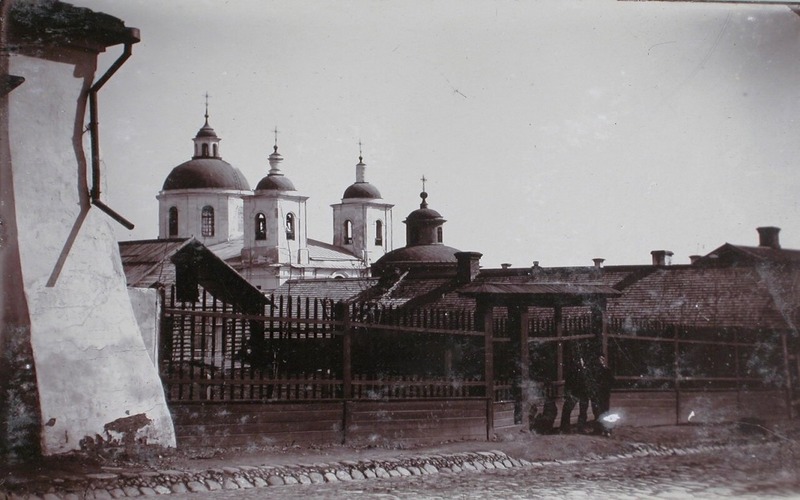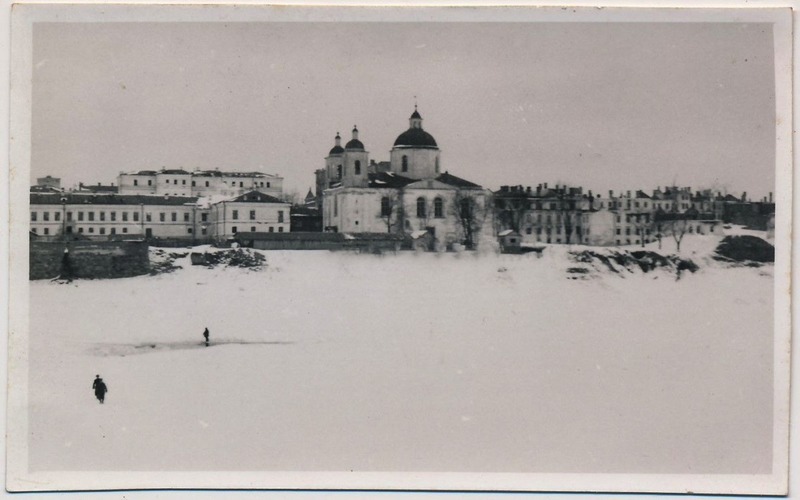- Vitebsk region, Polotsk District, Polotsk, Nizhne-Pokrovskaya Street, 24
About the Cathedral
Erected in 1761 by the monastery monks, the cathedral represents an exquisite example of 18th-century Baroque style. With its twin domes and rich architectural detailing, it impresses with its beauty.

Epiphany Cathedral. Photo of 1890
In 1633, the Ogiński princes allocated funds for the construction of the monastery and the erection of a large wooden church dedicated to the Epiphany of Jesus. A school for the education of Christian children was also built, where from 1655 to 1664, the renowned writer, enlightener, and public figure Symeon of Polotsk studied and taught. In 1761, the monastery community began the construction of a new stone church, which was consecrated on August 5, 1777. In 1836, the walls and the interior surface of the cathedral's dome were adorned with frescoes, fragments of which have survived to the present day.

Epiphany Cathedral. Photo of 1941
During the Soviet era, the cathedral building housed a sports hall. It reopened for worship in 1991 after a period of closure. Today, it serves as the cathedral of the Polotsk and Hlybokaye Diocese.
Inside the cathedral, visitors can see unique fragments of 18th-century frescoes, as well as the relics of the holy martyr Father Konstantin Zhdanov, transferred here in 2020. The former fraternal building now houses the Polotsk Museum of Belarusian Book Printing.

The Epiphany Cathedral is not only a place for spiritual inspiration but also a landmark attracting tourists with its historical and cultural significance.